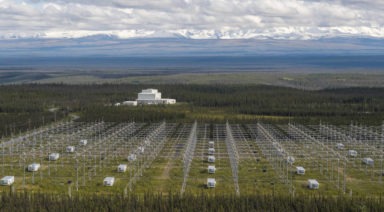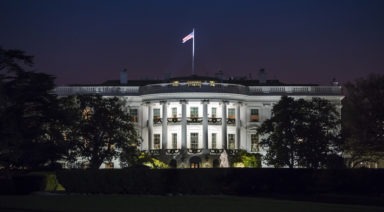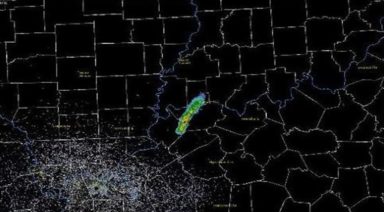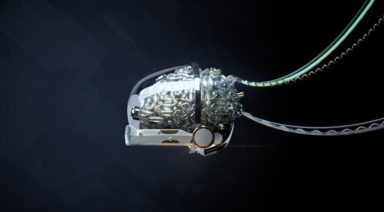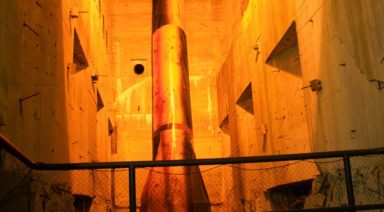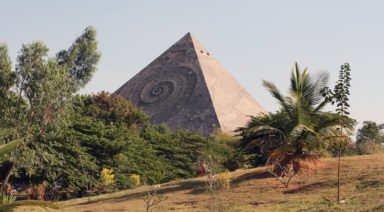Asgardia: The Space Nation Now Accepting Citizenship Applications
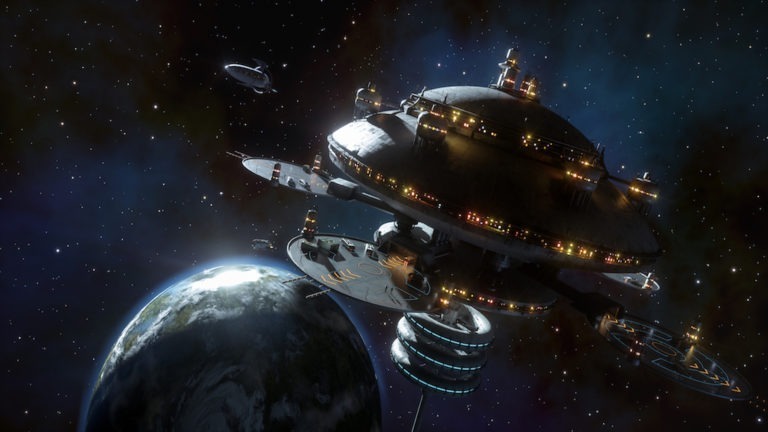
Elon Musk is trying to get to Mars, Japan wants to build a space elevator, and now a Russian billionaire wants to start a nation in low-earth orbit. Named after the Norse city in the sky, Asgardia dreams to be a utopian nation floating around Earth, where science and technology can flourish without being inhibited by the mundane goings-on down below.
Igor Ashurbeyli, an aerospace engineer from Azerbaijan, proposed the creation of Asgardia and quickly gained a following. Now, with nearly 200,000 “citizens,” he’s hoping to be accepted by the U.N. as a recognized nation in the world – the 173rd largest at time of writing.
Recently, Ashurbeyli partnered with NASA to successfully launch a satellite into orbit called the Asgardia-1. But the satellite was a small step in accomplishing the lofty goal of building habitable platforms for Asgardians at some point in the future.
Asgardia-1 is roughly the size of a loaf of bread, containing half a terabyte of pictures, names, the Asgardian constitution, and a coat of arms. It will orbit for about a year, before falling back to Earth and burning up in the atmosphere.
Asgardia Citizenship
Becoming a citizen of Asgardia is easy, one need only submit their email address, agree to some basic terms and conditions, and build a profile. At the time of writing this, Asgardia boasts 186,530 denizens, with the majority of the populace coming from the U.S. — Turkey is a close second.
The nation is currently in the midst of its parliamentary elections on its website, Asgardia.space. There are 112 candidates vying for one of 150 seats in the conceptual nation’s legislative body. These candidates will represent 13 districts based on the most widely spoken languages of its citizens thus far. Prospective MPs don’t need to reside in the native country of the language they wish to represent, they just need to be fluent in that language – Asgardia is a borderless nation after all.
Asgardia’s citizenship has fluctuated, with initial interest numbering somewhere around half a million. That number dropped to around 114,000 last summer, but has picked up since. Citizenship simply requires one to be over the age of 18 and not have any outstanding felony convictions.
A Space Nation’s Historical Precedent
Asgardia refers to itself as a future U.N. member, though it may face some difficulty being recognized by the world’s nations. A similar space nation was proposed in 1949 by an American named James Mangan, called the Nation of Celestial Space.
Unlike Asgardia’s modest attempt to create a putative nation of orbiting satellites, Mangan’s Nation of Celestial Space, or Celestia, tried to stake the bold claim of the entirety of outer space. Needless to say, his concept failed.
But before his attempt to represent the infinite, vast expanse beyond Earth met its demise, Mangan went so far as to mint coins, design a flag, and propose a set of rules and intentions for his vast territory. The flag depicted a blue background with a white ‘#’ – the editor’s symbol for space.
Celestia’s goal was to prevent Earth’s hegemonic struggle from spilling into the cosmos, similar to Asgardia’s anti-nationalist sentiment.

He even convinced the state attorney general of Illinois that his goal was altruistic, leading to a charter for Celestia in the state’s record.
Mangan proposed legislation to make it illegal for other nations to trespass in space via rockets and satellites. He also wanted to sell Earth-sized plots of space for a dollar, so that anyone who “owned” that much space would recognize the futility and absurdity of war.
In the end, it turned out that Celestia may have been more of a self-aggrandizing marketing ploy for Mangan, rather than a genuine attempt at what Asgardia says it aims to achieve.
Asgardia Projects and Missions
Asgardia promises to be a hub for scientists and researchers to develop future space technologies, uninhibited by commercial or military influence.
It says it will be impartial in Earthly matters and affairs – something like an ethereal Switzerland. Though in much the same way people take advantage of Switzerland’s neutrality on Earth, some foresee Asgardia as being another possible tax haven for the wealthy.
But if its ostensible purpose is to be unaffiliated and detached from worldly politics and international disputes, it would seem Asgardia might stay away from tax loopholes, if it even had the option.
Another part of the Asgardian manifesto is that it will aim to protect Earth from space threats. It plans to monitor and collect space debris from satellites and rockets currently floating around Earth; track solar flares, CMEs, and cosmic radiation; monitor asteroids, comets and meteorites that may pose threats; and finally, defend against microorganisms hitching a ride on small celestial bodies that may pose biological threats to humanity.
These noble tasks sound like they would require significant resources to defend against, but if someone is willing to do it, or at least try, maybe we should let them.
The colonization of space and space exploration has seen surges in public interest through the achievements of privatized programs like SpaceX. It won’t be surprising if we continue to see support for space missions that increasingly focus on including the public and making space attainable for the average citizen.
The question is whether Asgardia’s idealistic goal of creating an all-inclusive, neutral nation, without the influence of international politics and corporate interests is readily attainable. The optimist in us would like to think so.
Secret Space Programs and Breakaway Civilizations

In July 2014, on the 45th anniversary of Apollo 11’s moon landing, the government declassified information about a secret space program from the 1950s called Project Horizon. The plan outlined the building of a permanent military base on the moon. Ten to twenty men would be sent with all their supplies and nuclear weapons. The secret moon base would be used for surveillance against and protection from the Soviet Union, and the men would have constant communication with the Earth.
The released documents show that the scientists knew it wasn’t possible to implement the plan, but it was expected to be put in place as technology advanced. Project Horizon never got off the ground. But, that isn’t the end nor the beginning of the story about secret space programs from the past, present and the future.
Secret Space Programs and FDR
In the 1940s, according to recently released documents, President Franklin Delano Roosevelt commissioned a secret space program. He was concerned about how to move large numbers of people in case of nuclear war to avoid massive radiation damage. He thought there might also be a need to escape the ravages of some other global cataclysmic event. Since there was no place on Earth to which large masses of people could be moved, he considered the possibility of moving to locations in space.
At first, moving to the nearest star, Alpha Centauri, seemed like an option. However, the distance made such a plan impossible. As a next step, FDR focused on the moon, Mars or Venus as alternatives to Earth.
Beginning in 1945 at the conclusion of WWII, after President Truman took over, he brought 1,500 German scientists and engineers to the U.S. The scientists, under Hitler’s leadership in Nazi Germany, made advancements in the development of flying saucers, like the Nazi Bell, before and during the war. The German scientists worked at Fort Bliss, near El Paso, Texas, and were assigned the task of developing secret space programs under the project name of Operation Paperclip.
Truman believed the Germans had knowledge of anti-gravity propulsion engines and other spacecraft flight technology. Werner von Braun was the most well-known member of this group, who eventually became the designer of the Saturn V launch vehicle, which was used to propel American astronauts to the moon. He eventually became the director of NASA’s Marshall Space Flight Center and spoke out frequently about the need for space exploration.
Secret space programs are believed to be financed by secret “Black Budget” programs with contributions made by people with great wealth, private contractors and some government agencies. This secret funding keeps the programs from being subject to congressional oversight. Since the early 1960s, the programs have been kept secret even from the president: A memo was found in the newly released documents that said to keep “Lancer,” President Kennedy’s secret service nickname, out of the loop.
Secret Space Programs and Breakaway Civilizations
Secret space programs may have developed Breakaway Civilizations in outer space. Well-respected UFO and space researcher Richard Dolan, defines a Breakaway Civilization as a secret group of technologically advanced people who don’t share their knowledge with the rest of the world. These are essentially the Earth’s elite who have knowledge far above the rest of the world.
These elite may know of an upcoming imminent global geological cataclysm event and are building space bases as shelters for themselves. For example, they could be planning their escape from Nibiru Planet X, which “triggers comet showers” every 27 million years. One of those comets is expected to crash into the Earth and totally destroy it sometime in the not too distant future.
Scotland native, Gary McKinnon, hacked into thousands of government secret files. He found evidence of an anti-gravity propulsion system that traveled at incredible speeds. Also, he found evidence of portal technology that, when coupled with anti-gravity propulsion, would allow space travel to other stars and planets to be accomplished in a short amount of time.
It appears that Einstein’s theory that nothing can travel faster than the speed of light has been debunked. It also appears the Black Budget keeps these secrets even from NASA, since NASA apparently does not have access to anti-gravity technology. It still propels its rockets with fossil fuel.
McKinnon claims he saw nearly 300 photos of structures and civilizations existing on the back side of the moon. He says these structures (alien bases on the moon) are erased out of any photos when they are released to the public. Unfortunately, when he hacked into the computers, he was using a dial-up connection so he couldn’t download the photos. He says he took a screenshot of one that was saved on his computer, but his computer was seized when he was arrested. When his computer was subsequently returned to him, the photo was gone.
McKinnon also reported viewing a file that included names of “non-terrestrial officers” who he says were assigned to ships that weren’t U.S. Navy ships. He concluded these were the officers assigned to space ships, not navy ships, indicating that Breakaway Civilizations already exist.
There are many outstanding questions about secret space programs. Why do these programs remain secret? Will there be an opportunity for non-elite citizens to be part of a Breakaway Civilization? A poll taken in 2015 shows that 54 percent of Americans believe extraterrestrial intelligence exists. With such a large number of people supporting alien existence, why is there still a need to maintain secrecy?
Want more like this article?
Don’t miss Deep Space on Gaia for more on the long and hidden history of Earth’s secret space program.







